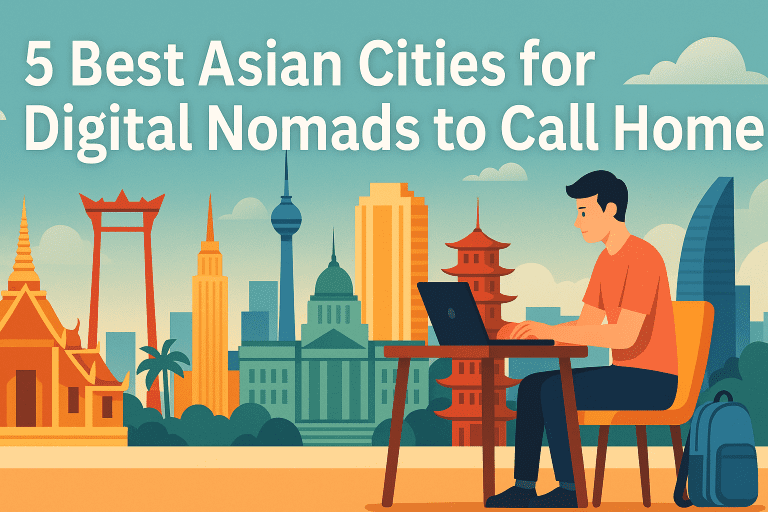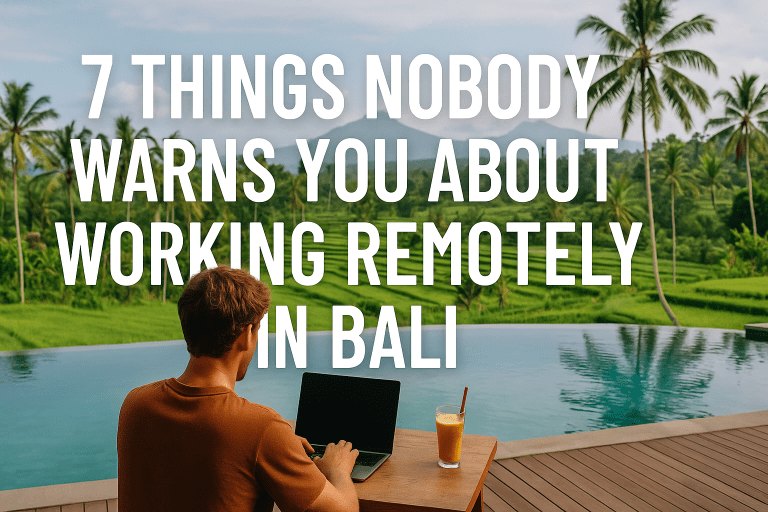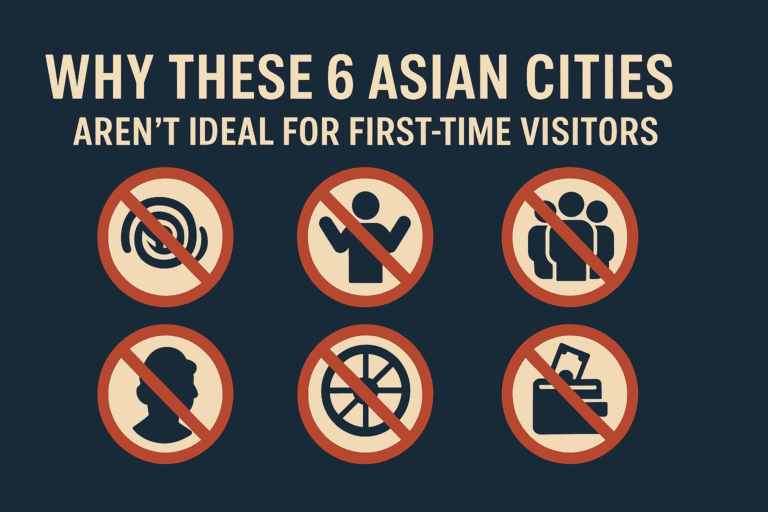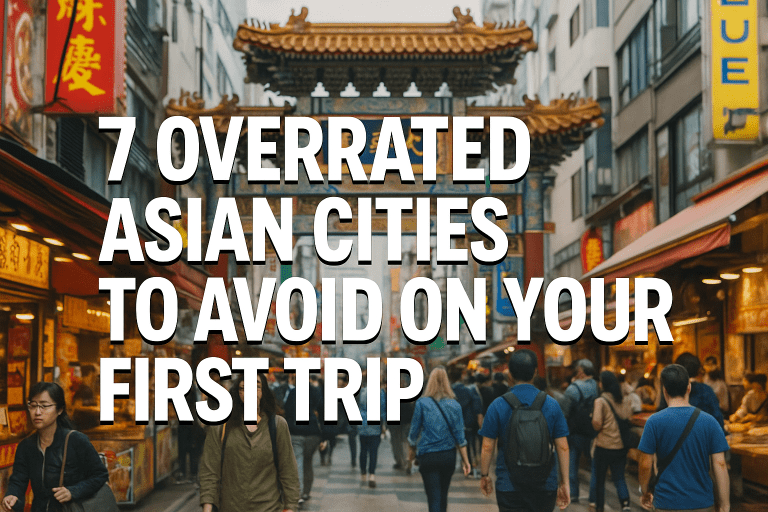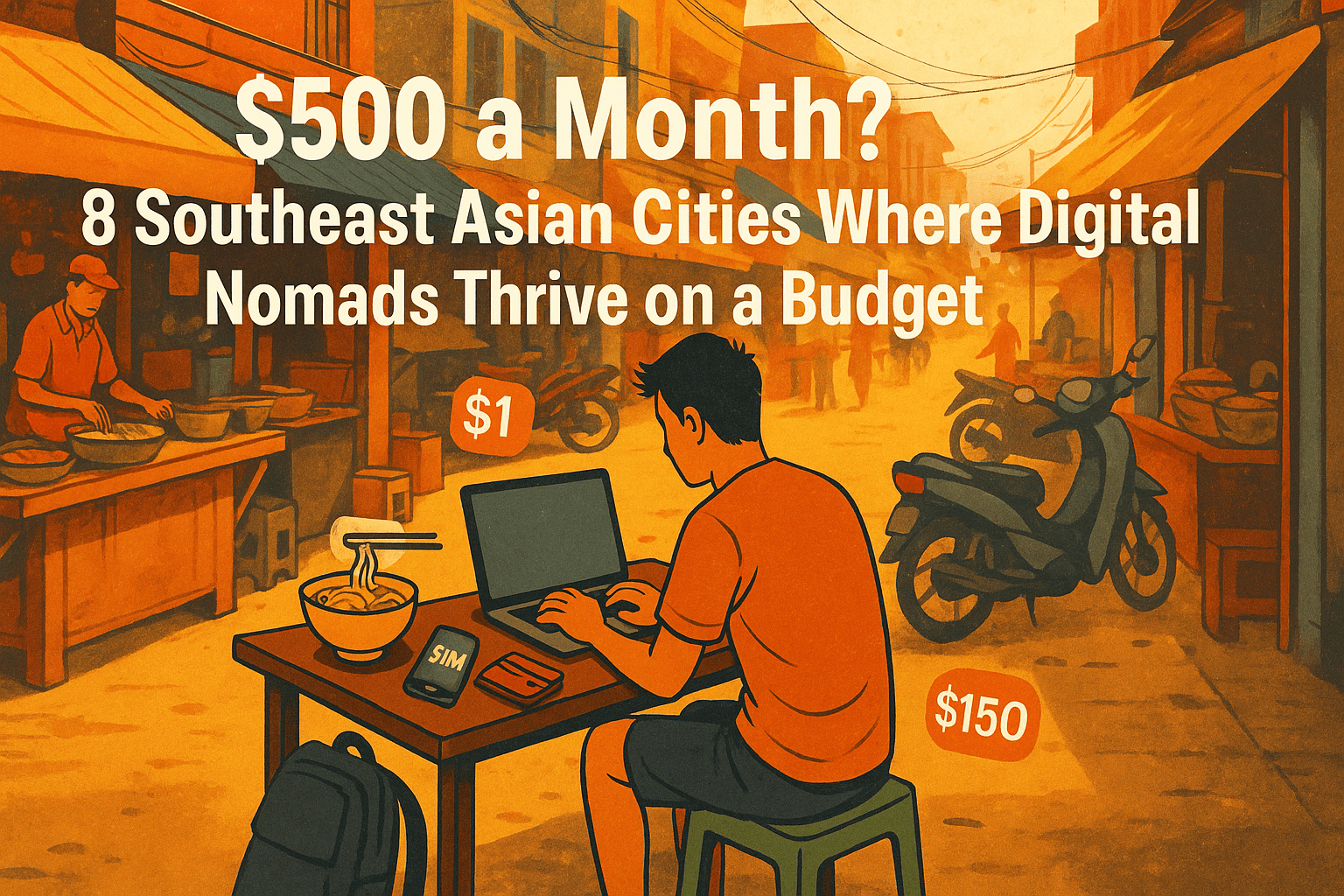
For many aspiring digital nomads, the dream involves tropical beaches, vibrant cultures, and a significantly lower cost of living than back home. Southeast Asia often tops this list, but can you really live and thrive there on a budget as low as $500 a month? This isn’t just a travel fantasy; for those willing to embrace extreme minimalism and make strategic choices, it’s a practical question that requires a grounded, realistic answer. Living on $500 a month as a digital nomad in Southeast Asia isn’t the comfortable, cafe-hopping lifestyle often pictured on Instagram. It’s a challenge that demands discipline, resourcefulness, and a focus on true local living. This article isn’t about luxury; it’s about whether this ultra-low budget is genuinely feasible, the compromises required, and specifically where it might be possible.
Our goal here is to cut through the hype and provide you with the concrete details needed to understand the reality of pursuing a digital nomad lifestyle on an exceptionally tight budget. We’ll explore what $500 a month actually looks like on the ground, break down the potential costs, discuss the essential infrastructure you’ll need, and highlight eight specific cities where such a budget might allow you to survive, if not entirely thrive, while working remotely. We’ll also tackle the significant challenges you’ll face and offer practical strategies for overcoming them, because making this budget work requires careful planning and a willingness to adapt.
Understanding the $500 a Month Reality in Southeast Asia
Let’s be clear from the start: $500 a month in Southeast Asia is a survival budget. It means living like a local, probably eating street food or cooking most meals, finding very cheap accommodation (likely a basic room, not an apartment), minimizing entertainment and non-essential spending, and potentially foregoing some conveniences you might take for granted. It typically leaves little room for error, medical emergencies, unexpected visa costs, or extensive travel between locations.
Breaking down a $500 budget reveals how tight things are. Rent is usually the biggest expense. To stay within this budget, you’d likely need to find a room in a shared house or a very basic guesthouse for ideally $100-150 a month, maximum $200. This is achievable only in specific, less touristed areas or by committing to long-term rentals (often 3-6 months minimum) which can require upfront deposits. Food would need to average around $5-8 a day ($150-240/month), meaning primarily local street food or simple ingredients to cook at home. Transport costs would need to be minimal, relying on walking, bicycles, or cheap local buses/minivans, maybe budgeting $20-30 a month. A local SIM card with a decent data package might cost $10-20 a month. That leaves perhaps $30-120 for everything else – limited internet cafes or occasional co-working (most co-working spaces exceed this budget quickly), toiletries, very basic healthcare if needed, and zero room for luxuries like Western meals, extensive travel, or nightlife.
This budget necessitates a fundamental shift in lifestyle. It requires being highly disciplined with spending, comfortable with very basic living conditions, and prepared for situations where you might lack typical amenities. It’s achievable not just anywhere, but in specific cities where the baseline cost of local living is exceptionally low.
Living this dream on $500 a month means defining “adventure” as the challenge of minimalist existence and discovering the depths of local culture on a shoestring, rather than pursuing typical tourist activities.
8 Southeast Asian Cities Where a $500/Month Budget is Potentially Achievable
Finding cities where you can realistically target a $500 monthly budget while maintaining the ability to work remotely (requiring at least somewhat reliable internet) significantly narrows down the options in Southeast Asia. We need to look beyond the popular, more developed nomad hubs like Bali or Chiang Mai, which, while affordable by Western standards, typically require a budget closer to $800-$1500+ for a comfortable nomad lifestyle. The cities listed below are candidates for an extremely budget-conscious approach, focusing on the bare necessities. Remember that costs can fluctuate based on season, specific location within the city, and rental duration. 
1. Hue, Vietnam
Located in central Vietnam, Hue is a historic city known for its Imperial City and delicious, incredibly affordable local food. While it attracts tourists, it remains far less expensive than Hanoi or Ho Chi Minh City.
- Budget Potential: Rent for a basic room in a guesthouse or local house can be found for $120-180/month, especially on the outskirts or via long-term arrangements. Food costs are minimal if you eat local (Bun Bo Hue for under $1-2), easily staying within the $6-8/day range.
- Internet: Main cafes and guesthouses usually have decent Wi-Fi, though it can be less reliable outside tourist zones. Using a local SIM with a data plan is essential for backup.
- Safety: Generally considered very safe, with petty theft being the main concern, as in any tourist area.
- Social Circle: Less of an established nomad scene than bigger cities, meaning you might need to seek out local connections or expat groups on social media.
Hue offers a slower pace and rich culture for those prioritizing history and food on a tight budget.
2. Kampot, Cambodia
This riverside town in southern Cambodia is popular with backpackers and budget travelers but maintains a laid-back, affordable vibe. It’s smaller than Phnom Penh but offers a pleasant environment.
- Budget Potential: Basic guesthouse rooms or rentals outside the town center can be found for $100-150/month. Local food is cheap, and cooking simple meals is feasible. Expect to spend $5-7/day on food. Total basic living might hover around $400-500 if very careful.
- Internet: Improving, but still can be spotty compared to more developed areas. Relying on multiple SIM cards and cafe Wi-Fi is wise.
- Safety: Kampot is generally safe, known for its friendly atmosphere.
- Social Circle: A small but present expat/traveler community makes meeting people easier than in purely local towns.
Kampot is a strong contender for a very low budget, offering a tranquil setting.
3. Vientiane, Laos
As the capital of Laos, Vientiane might seem an unlikely candidate, but it’s one of Southeast Asia’s most relaxed and affordable capitals. It lacks the bustle and high costs of Bangkok or HCMC.
- Budget Potential: Basic room rentals can sometimes be found in the $150-220/month range, particularly away from the riverfront tourist strip. Local Lao and Vietnamese food is very inexpensive, allowing for $6-8/day food costs.
- Internet: Relatively stable in the city center, including many cafes and guesthouses. Coverage can drop off quickly on the outskirts.
- Safety: Very safe, even at night, for a capital city.
- Social Circle: A small expat community exists, and it’s relatively easy to connect if you put in the effort, but it’s not a buzzing digital nomad hub.
Vientiane requires careful budgeting but is one of the few capital cities where $500/month is vaguely conceivable for essentials.
4. Yogyakarta, Indonesia
A major cultural and educational hub in Java, Indonesia, Yogyakarta (or “Jogja”) offers rich Javanese culture without the high prices of Bali.
- Budget Potential: Finding a “kost” (local boarding house) for $100-180/month is common, especially for long stays. Local food is very cheap (Nasi Goreng, Satay for $1-2), keeping food costs low ($5-7/day).
- Internet: Decent in many parts of the city, especially around universities and main roads. Reliable connection is crucial for remote work, and cafes or tethering might be needed.
- Safety: Generally safe, though traffic can be chaotic.
- Social Circle: A large student population and some expats create opportunities to meet people, though it’s not a dedicated nomad community.
Jogja offers cultural immersion and affordability, provided you live very locally.
5. Iloilo, Philippines
Located on Panay Island, Iloilo City is a developing urban center with a lower cost of living than Manila or Cebu. It has universities and modern conveniences without the tourist price tag of places like Boracay.
- Budget Potential: Basic room rentals or apartments in less central areas can be found for $150-250/month. Filipino food is generally inexpensive if eating local (carenderias), allowing for $6-8/day food budget.
- Internet: Can be variable depending on the provider and location. Fibre is available in some areas, but consistency needs checking.
- Safety: Standard urban safety precautions apply. Generally considered reasonably safe.
- Social Circle: A friendly local population. A small but growing expat presence.
Iloilo provides an urban environment feel at a much lower cost than the primary Philippine hubs.
6. Battambang, Cambodia
Another Cambodian city, Battambang is even less touristed than Kampot or Siem Reap and offers an extremely low cost of living.
- Budget Potential: Very basic room rentals might be found for $80-120/month. Food is incredibly cheap if you stick to local markets and stalls ($4-6/day). This is one of the few places where $500/month might offer slightly more breathing room for essentials.
- Internet: Likely less reliable than in larger cities. Prepare for occasional outages and potentially slower speeds. Multiple SIM cards and finding reliable cafes are key strategies.
- Safety: Very safe, small-town feel.
- Social Circle: Minimal dedicated nomad scene; opportunities are primarily with locals or long-term expats involved in NGOs/businesses.
Battambang is for the truly budget-focused who want a very quiet, authentic experience.
7. Da Lat, Vietnam
A city in the Central Highlands of Vietnam, known for its cooler climate and stunning scenery. It’s popular with Vietnamese tourists but less so with international backpackers/nomads than coastal cities.
- Budget Potential: Basic rooms can be found for $120-180/month. Local food is abundant and cheap ($5-7/day). The pace is slower, reducing temptation for expensive activities.
- Internet: Generally good in the city center and cafes, though mountain areas can be spotty.
- Safety: Very safe city with a relaxed atmosphere.
- Social Circle: Mostly local focus. Connecting might require more effort or finding specific local groups.
Da Lat offers a unique climate and atmosphere for a budget lifestyle away from the typical SEA heat.
8. Savannakhet, Laos
A quiet city on the Mekong River bordering Thailand, Savannakhet is primarily a commercial center rather than a tourist hotspot.
- Budget Potential: Very basic accommodation is incredibly cheap, potentially $80-150/month. Local food is simple and low-cost ($4-6/day). This is another contender for the absolute lowest cost baseline.
- Internet: Potentially slower and less reliable than Vientiane, especially outside the main town area. Essential to check specific guesthouses/rentals.
- Safety: Very safe, quiet town.
- Social Circle: Minimal expat presence. Interaction will be primarily with locals, which can be rewarding but requires openness.
Savannakhet is for the extremely budget-conscious seeking a very quiet, non-touristy environment.
As you can see, even in these cities, reaching the $500 mark requires compromises, especially on accommodation comfort and discretionary spending. You’ll need to prioritize finding the absolute cheapest long-term rental and commit to eating almost exclusively local food.
Navigating the Realities and Challenges of a $500/Month Budget
Attempting to live on $500 a month as a digital nomad presents significant hurdles beyond just finding cheap places. Being prepared for these challenges is crucial for success and sustainability.
One major reality is the practicalities of visas. Most Southeast Asian countries offer 30-day visa exemptions or visas on arrival. To stay longer, you’ll need extensions or visa runs. Visa runs, even overland ones to nearby countries, cost money for transport, potentially accommodation, and visa fees. This can easily eat up a significant portion of a $500 monthly budget. Planning your visa strategy is paramount, and sometimes the cost of the visa itself might push your average monthly expenditure above $500, even if daily living is cheaper. Research country-specific visa options thoroughly before arriving.
Infrastructure inconsistency is another challenge. While cities like Hue or Vientiane have reasonable internet in centers, move outside the main drag or into the cheapest accommodation, and reliability can drop. Power outages, though less frequent than they used to be in many areas, can still occur. A $500 budget likely prohibits paying for high-speed fiber or expensive co-working space memberships, meaning you’re often reliant on Wi-Fi quality in budget guesthouses or local cafes, which can be hit or miss. Being prepared for connectivity issues is vital for remote work.
Finding a strong social circle can also be tougher on this budget. While some cities have small nomad or expat communities, a $500 budget severely limits participation in paid social events, Western restaurants, or activities. Building community might rely more on connecting with locals, participating in free community events, language exchanges, or finding very budget-friendly meetups online. Loneliness is a real factor in the nomad life, and a tight budget can exacerbate it if you can’t afford typical social outlets.
Safety is a consideration, though Southeast Asia is generally safe. Living in the absolute cheapest areas might mean being further from well-lit main streets or having less security infrastructure than pricier neighborhoods. Basic precautions – not walking alone late at night in unfamiliar areas, securing your belongings, being aware of petty theft scams – are essential, regardless of budget. Always trust your gut feeling about a location or situation.
Healthcare access on a $500 budget is a major concern. Basic travel insurance is non-negotiable, but even a simple doctor’s visit or minor medication could strain this budget significantly. Having a small emergency fund, even $100-200, is crucial, but difficult to build when living so close to the bone. For serious issues, you’d likely need to rely on insurance (ensure it covers you adequately as a remote worker/long-term traveler) or travel to a larger city with better facilities, incurring costs that exceed the budget.
Work-life balance requires discipline. When every dollar counts, the pressure to earn and minimize expenses can be immense. It’s easy to fall into a cycle of just working and living minimally without experiencing the culture or enjoying your surroundings, defeating some of the purpose of being a nomad. Finding free ways to engage with the local environment and culture is key.
Here’s a relatable challenge: I remember trying to stick to an ultra-low budget in a smaller Vietnamese town. One week, the Wi-Fi in my cheap guesthouse went down completely for three days, and the nearest cafe with reliable internet was an expensive Grab ride away. With no budget for expensive data plans or daily Grab trips, I had to scramble to find a local library with spotty public Wi-Fi, losing productive work hours. It taught me that on a strict budget, having multiple backup plans for essentials like internet is not a luxury, but a necessity, even if those backups themselves stretch the budget slightly.
“Uncertainty is the only certainty there is, and knowing how to live with insecurity is the only security”
This quote resonates strongly with the budget nomad lifestyle. Embracing a certain level of financial and logistical insecurity is part of making an ultra-low budget work. It requires adaptability and resilience.
Making it Work: Practical Tips and Next Steps
Living on $500 a month in Southeast Asia is not passive; it requires active, strategic choices every day. Here are key takeaways and practical steps:
- Choose Your City Wisely: Research the actual local cost of long-term basic rentals and food in potential cities, not just tourist prices. Cities listed here are starting points, but local research on accommodation groups and forums is essential.
- Prioritize Accommodation: Your biggest cost sink. Focus relentlessly on finding the cheapest long-term room. Be prepared for basic amenities – fan only, shared bathroom, simple furnishings. Look on local classifieds (use translation tools), ask locals, and negotiate long-term rates.
- Eat Local, Cook Simply: Commit to eating street food or cooking simple meals from local markets. Avoid Western restaurants or cafes for daily food. Learn a few basic phrases to order food or shop at markets. Check out guides on street food safety and options.
- Minimize Transport Costs: Walk, cycle, or use the cheapest local buses/minivans. Avoid taxis or ride-sharing apps except when absolutely necessary or for safety late at night.
- Connectivity Strategies: Invest in a reliable local SIM card with a generous data package. Identify cafes or public spaces with free, stable Wi-Fi you can access. Have a small data reserve for emergencies. Consider a portable power bank.
- Build a Small Emergency Fund: Even $100-200 can be critical for unexpected issues (minor health, visa hiccup, broken phone). Building this is hard on $500/month, but vital.
- Find Free Activities: Explore parks, walk around local neighborhoods, visit free temples or markets, join language exchange groups, attend free community events.
Living on $500 a month in Southeast Asia is less about simply existing and more about mastering the art of minimalist, highly localized living while maintaining your remote work obligations. It is challenging, requires significant sacrifice compared to a more standard nomad budget, and is certainly not for everyone. However, for those with extremely low earning requirements or significant savings goals, and a willingness to fully immerse in local life without typical expat comforts, it can unlock experiences inaccessible to others.
For further, up-to-date information, you should always consult official government immigration websites for the latest visa rules and requirements, check online forums specifically for budget travelers and digital nomads in the target cities (like city-specific Facebook groups or Nomad List/Reddit forums, using their free features or trial periods for research), and look at local cost-of-living aggregates (like Numbeo or local news reports on economic conditions, but understand these are averages that might not reflect ultra-budget options). Remember that costs and rules can change, so current research is key.
Southeast Asia offers incredible opportunities for remote workers, including the possibility of living very affordably. Achieving a budget of $500 a month is at the extreme end of this spectrum, demanding careful preparation, resilience, and a deep commitment to living simply. If you’re ready for the challenge, these cities offer a potential pathway.


